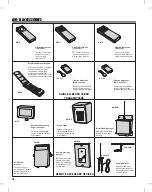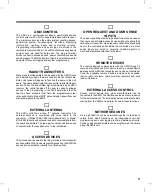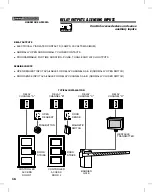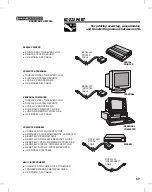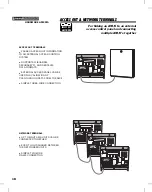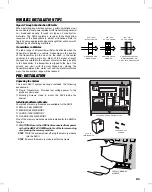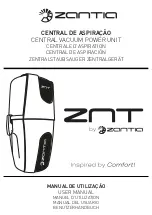
➀
AM/II CONTROL
The AM/II is a microprocessor based, world class access
control system with a built-in superheterodyne radio receiver.
The microprocessor runs the entire system, granting access,
performing system “housekeeping” functions, displaying
information, reading inputs and controlling outputs.
Programming information and event logs are stored in the
removable memory module. The soft touch silicone keypad and
numeric keys are used for data entry. The plug-in terminal
blocks connect to access devices, power, remote devices and
sensing inputs. The RS-232 port connects to external computer
equipment for event logging and system programming.
➁
RADIO TRANSMITTERS
Many models of transmitters can be used with the AM/II. Some
are individually coded, others are coded in blocks of numbers.
Both code types will appear to function the same to the end
users. The users will activate their transmitter to attempt to gain
access. When the transmitted signal is detected by an AM/II
receiver, the control decides if the user is currently allowed
access. If the programming in the AM/II determines that the
user can have access at that time, the programmed output
relay will activate. Model MGT gate obstacle transmitters can
also send signals to the AM/II.
➂
EXTERNAL ANTENNA
The AM/II control has a type “F” antenna connector. The
external antenna is connected with co-ax cable to the
connector. A Model EXA-1000 (omni-directional), or Model
EXA-2000 (directional) antenna is used to receive signals from
the user’s transmitters. The radio gain control knob can be used
to custom tailor the reception area to the installation.
➃
ACCESS DEVICES
The access devices wired to the relay terminals control specific
access portals. When a user is granted access by the AM/II the
access device activates (usually for a timed period).
➄
OPEN REQUEST AND DOOR SENSE
INPUTS
The open request inputs wire to pushbuttons or knox boxes so
that users can activate access devices without needing their
card code or transmitter. Open request pushbuttons are usually
next to the controlled portal inside the controlled area. Door
sense inputs are wired to normally closed magnetic or
mechanical switches attached to the door.
➅
REMOTE DEVICES
The remote devices communicate with the AM/II through a
common electrical buss. Each device is set to a unique device
address so the AM/II can recognize each unit as an individual.
Currently available remote devices include entry keypads,
remote radio receivers, radio proximity receivers and card
reader interfaces.
➆
EXTERNAL ACCESS CONTROL
Access control panels from other manufacturers can be
connected to the AM/II. The AM/II can serve as a remote device
for the external panel. The external panel can validate the data
coming from the AM/II and perform its own access functions.
➇
NETWORKED UNITS
Up to eight AM/II’s can be networked together to function in
unison. Each AM/II functions as an independent unit, but
programming and event logging is shared between all units.
Cards, codes and transmitters can be programmed to activate
a specific AM/II unit.
7






